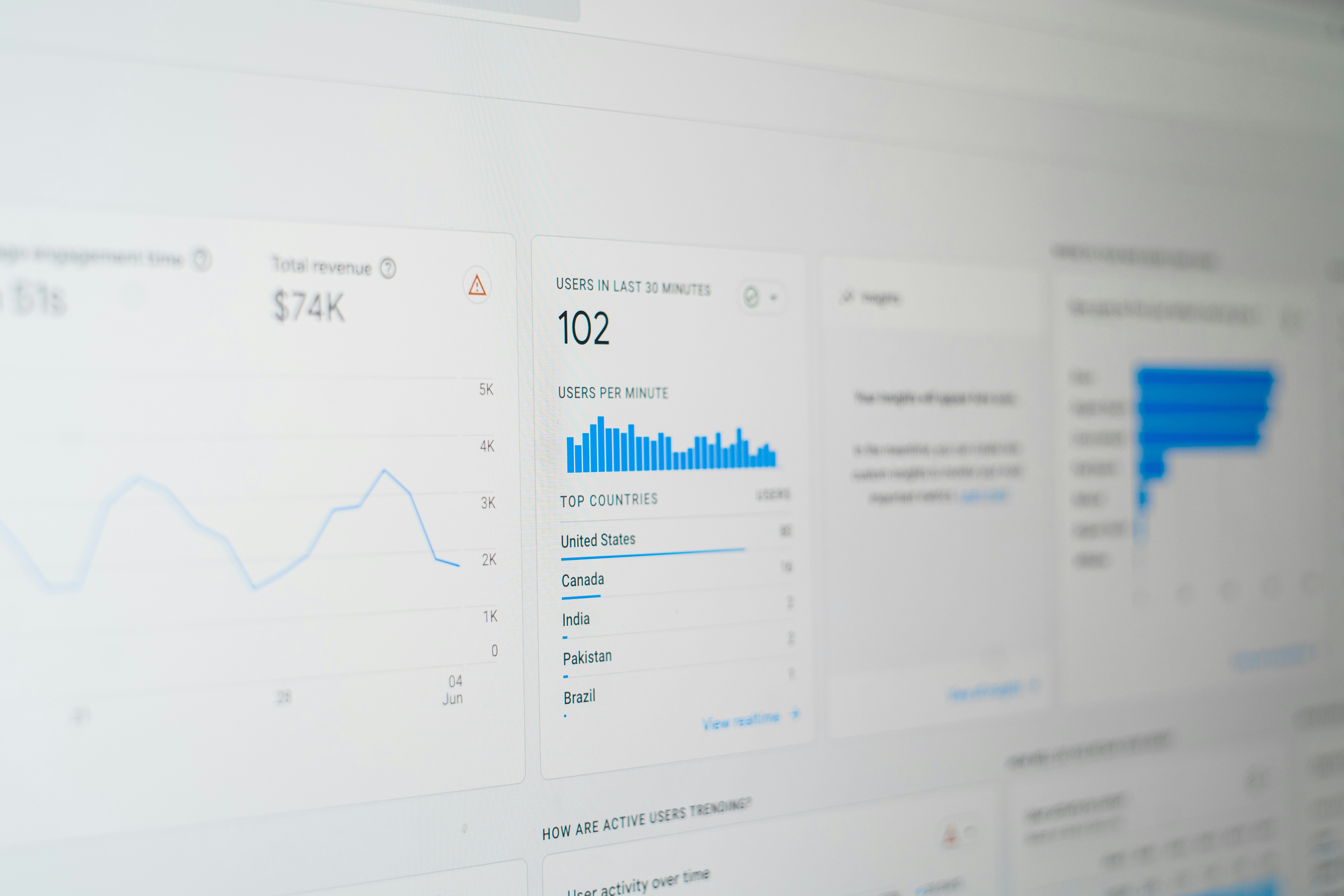Solving GA4 Data Discrepancies Easily
Loves Data
Have you ever checked your Google Analytics 4 (GA4) reports, only to find that the data doesn't seem to match the actual activity on your website?
You're not alone. Up to 20% of analytics setups have some form of data inaccuracy, and it can be incredibly frustrating – especially when you’re relying on this data to make marketing and business decisions.
If GA4 numbers don’t match what you’re expecting, it can throw off your strategy and leave you second-guessing your setup. But the good news is that most data discrepancies can be explained and fixed. In this article, we’ll walk through the most common causes of mismatches, how to troubleshoot them, and how to ensure your GA4 setup delivers accurate, reliable insights.
Why Your GA4 Data Might Not Match Website Activity
Before you can fix GA4 discrepancies, it’s important to understand what might be causing them. Below are the most common culprits:
1. Incorrect Tracking Code Implementation
- Some pages use different templates or layouts
- Third-party platforms (like payment gateways) don’t allow tracking
- The Google Tag for GA4 is placed incorrectly in Google Tag Manager (GTM)
2. Misconfigured Tags and Triggers
- Events not firing at all
- Duplicate events being sent
- Missing conversions
3. Ad Blockers and Privacy Settings
- Pageviews and sessions may not be tracked at all
- Outbound clicks or form submissions might be blocked
4. Cookie Consent Banners
If your website uses a cookie consent banner to comply with privacy laws like GDPR or ePrivacy, visitors may choose to decline tracking. When this happens, GA4 will not collect data for that session unless you've implemented Consent Mode.
This can significantly reduce the data you see in GA4, especially for visitors from regions with strict privacy regulations. Even if your tracking is configured correctly, users who opt out of analytics cookies will not appear in your reports.
To address this, you can:
- Implement Google Consent Mode to model behavior when consent is not given
- Review your banner’s configuration to ensure it's working as expected
- Communicate the benefits of cookies to users clearly and transparently
5. Spam and Bot Traffic
- Automated visits from crawlers
- Referral spam from suspicious sites
- GA4 includes basic bot filtering, but some get through
6. Differences Between Meta Ads and GA4 Reporting
Another common source of confusion is when Meta Ads (formerly Facebook Ads) reports show different results from what GA4 reports for the same campaign. Here's why:
- Attribution Windows: Meta uses a 7-day click and 1-day view default attribution window, while GA4 uses data-driven or last-click attribution by default.
- Blocked or Missing UTM Tags: If your Meta ad links don't include UTM parameters, GA4 may not recognize the traffic as coming from Meta.
- Tracking Blockers: Many users block tracking pixels, so Meta counts a view or click but GA4 never receives a pageview.
- Cross-Device Tracking: Meta can track users across devices (logged-in Facebook users), while GA4 may see them as multiple separate users if user-ID isn't configured.
In short, both platforms are telling the truth – just from different perspectives.
Troubleshooting GA4 Data Discrepancies
✅ Verify GA4 Tracking Code
- Use Google Tag Assistant or GA4 DebugView to check each page
- Ensure the GA4 tag is not duplicated
✅ Test Tags and Triggers
- Use GTM Preview mode to simulate interactions
- Check for events firing correctly
✅ Use GA4’s DebugView
Monitor your user session and confirm all expected events are logged in real time.
✅ Review Referral Exclusions
Set up referral exclusions for third-party domains (e.g. PayPal) where people can travel back to your website.
GA4 Troubleshooting Checklist
| Check | Details |
|---|---|
| GA4 code is installed | Ensure the GA4 tag is on every page |
| Tags and triggers fire correctly | Use GTM Preview to test your setup |
| DebugView shows events | Check real-time behavior during testing |
| Account for ad blockers | Understand how blockers may hide user behavior |
| Cookie consent impacts data | Track consent status and implement Consent Mode |
| Exclude internal traffic | Use IP filters or developer query strings |
| Cross-domain tracking configured | Set up proper linking between domains |
| Enhanced measurement enabled | Check scroll, file download, and click tracking |
| Spam and bot filtering in place | Analyze reports for potential bot traffic |
Maintaining Accurate GA4 Data Over Time
Conduct Regular Audits
Review your GA4 and GTM setups quarterly to catch issues early.
Set Up Filters for Internal Traffic
Exclude team visits using IP filters or add the traffic_type parameter to the events you send to GA4.
Configure Cross-Domain Tracking
Prevent session breaks by ensuring your domains are linked in GA4 settings.
Use GA4’s Advanced Features to Improve Accuracy
Enhanced Measurement Events
Track scrolls, downloads, and clicks without custom code.
User-ID Tracking
Improve cross-device accuracy for logged-in users.
Predictive Metrics
Use machine learning insights once your data is accurate and complete.
FAQs About GA4 Data Discrepancies
Q: Why does GA4 show fewer users than expected?
A: Ad blockers, browser privacy settings, missed tags, and cookie consent banners can all lead to undercounting. Use DebugView to validate data collection.
Q: How do I remove fake or spam traffic from GA4?
A: GA4’s built-in bot filtering helps but isn’t perfect. If bot traffic is an issue in your reports, you could consider moving to server-side tagging with GTM and using other methods to reduce the impact of bots.
Q: Why are my Facebook Ads results different from GA4?
A: Attribution models, tracking differences, cookie consent, and missing UTMs can all lead to mismatches. Both tools measure from different angles.
Bringing It All Together
GA4 is powerful, but it’s only as good as the data you feed into it. Discrepancies can be confusing, but by troubleshooting the right way and maintaining your setup over time, you’ll build confidence in your reports – and in your decisions.
Ready to Master Google Analytics 4?
Want to go beyond the basics? Our comprehensive GA4 course at Loves Data will help you:
- Build a reliable GA4 setup
- Identify and fix data discrepancies
- Use GA4’s advanced features with confidence
Join the GA4 course now and take control of your website analytics.




Comments